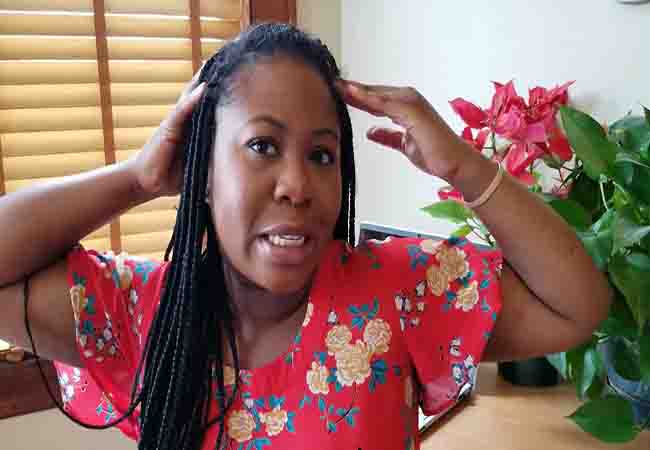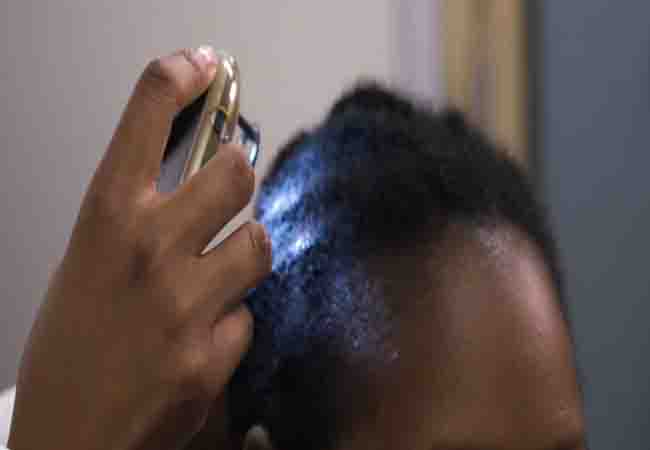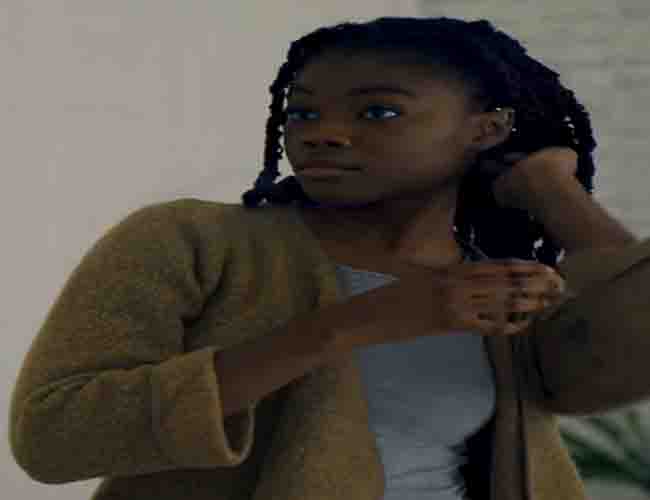Wearing braids regularly does more damage to your hair and hairline than you might realize. How? And why do braids make your hairline recede?
Tight hairstyles like braids cause much strain on the ends of hair. This causes a condition known as traction alopecia, which makes the hairline recede and baldness. So, with tight braids, you’ll lose a lot of hair.
But what’s the root cause of hairline receding? Is it all about braids or something else? Let’s learn in detail along with how to prevent receding.
Does Braiding Promote Hair Growth and Regrow Hairline

Braids don’t make your hair grow faster. Hair growth depends on genetic factors, the amount of protein and nutrition hair receives through diet, and the health of your scalp.
Hair growth is ensured if there’s proper flow of blood, oxygen, and nutrients to the hair follicles. And since braids do not require any heat, they don’t hinder hair growth. But Braids inhibit all the other factors, straining your hair follicles and causing your hairline to recede.
Women, especially those who like tight hairstyles, suffer more from a receding hairline. Although tight hairstyles make hair look good, they damage the hair follicles.
What is A Receding Hairline

A receding hairline is when hair starts falling out and thinning. It’s speculated that only aged people face this problem, but, in fact, anyone can suffer from a receding hairline.
The hairline starts receding from the sides of the forehead and ultimately reaches the middle of the scalp, causing baldness. Though men suffer more from receding hairline and face baldness, women suffer more from hair thinning.
However, hairline thinning isn’t an urgent medical issue but might pinch you mentally. If you notice too much receding, see a doctor.
Braids Make Us Go Bald

Braids, especially ones done too tightly, cause traction alopecia. Traction alopecia eventually leads to baldness and causes severe mental frustration.
How Braids Can Make Your Hairline Recede and Cause Hair Loss: What to Do to Prevent Damage to Your Hair and Scalp
Braids put a strain on the edges of your hair causing breakage, split ends, and hair being pulled out from the root leading to a receding hairline.
Re-twisting braids once a week will make them healthier and prettier. But overdoing it might lead to hair fall from the base. Also, avoid hair products that lead to hair breakage.
Braids are protective hairstyles – indeed. But after a braid out, make sure to do the next braid at least after 2 weeks or 1 month. Or else, you might see your hairline receding.
Next, hormones play a role in hair loss among both men and women. Hormone imbalance can make hair follicles narrow, inhibiting hair growth. Plus, pregnancy causes a lot of hormonal imbalances as well, affecting hair growth.
Also, childbirth is responsible for hair thinning. This usually indicates some sort of hormonal imbalance, too, but luckily, this problem subsides within 6-9 months after pregnancy.
A. Stop Your Hairline from Receding

If you have a receding hairline, follow the advice below to avoid going completely bald:
- Don’t make braids out of baby hair.
- Massaging your scalp regularly increases blood flow in your hair follicles and dermal papilla cells thicker and healthier.
- To avoid the risk of receding hairline, ensure that hair is properly maintained and healthy before doing braids. Moisturize and clean hair daily. Pay special attention to the edges while using the conditioner. Condition the hair heavily and keep the conditioner on for a while.
- Aloe Vera, known for its soothing qualities, hydrates the scalp and moisturizes hair. It’s one of the best natural products you can use on your hair to avoid hair fall.
- Lemon juice and oil work miracles when it comes to improving the healthiness and growth of hair.
- Coconut oil is full of fatty acids, which enables the oil to enter your hair follicles, healing and improving hair growth from the inside.
- The use of rosemary oil helps fight hair loss in both men and women. Rosemary also helps your hair grow faster.
- Castor oil helps to recover damaged hair and keep hair damage free. It has anti-bacterial and anti-fungal properties. These make it perfect against dandruff and folliculitis. Apply every night and massage for best results.
- Lavender water does miracles for your hair. Mix it with tea-tree oil and apple cider vinegar and apply it to promote hair growth.
- Having enough protein and iron in the diet ensures proper growth of regrown edges. Eat chicken, eggs, and vegetables so that your hair gets enough protein.
- A lack of nutrition hinders hair growth. Your hair requires a lot of vitamins C, B, and also selenium, all of which you can get from fresh fruits and vegetables.
- Do not brush damaged hair as the bristle from the hairbrush can get stuck on the curls and cause breakage. Brushing hairline can damage baby hair and lead to a receding hairline. To keep hair smooth, use a pomade or a hair gel and brush hair with the softer side of a boar-bristle brush.
- If you’ve curly or spikey hair, wrap your head with a satin scarf or sleep on a satin pillowcase to avoid hair breakage. The texture of satin deters dehydration and friction, leading to better hair.
B. What Are the Effects of Tight Hairstyles on Receding Hairlines?

Tight hairstyles cause receding hairline and baldness. They also contribute to itchiness and a burning sensation on the scalp, and the breakage of hair.
Ensure your braids are correctly handled and maintained. If they’re not, they can become heavy and might not last long. Folliculitis, which causes hair follicles to become inflamed and filled with blisters and pus, also contributes to hair loss.
Be careful when doing hairstyles that require extreme tugging and pulling of hair and to be tied tightly. These may include:
1. Buns, ponytails, and up-dos that are tightly pulled.
2. Cornrows.
3. Dreadlocks.
I. Traction Alopecia
Excessive tugging and pulling on your hair can lead to traction alopecia which causes irreversible damage to hair follicles and permanent baldness.
Many women like wearing wigs or hair extensions to hide their condition, but this causes more damage to their hair and isn’t suggested.
Symptoms of traction alopecia include:
- Redness of the scalp
- Bumps
- Soreness or stinging of your scalp
- Itching
- Scaling
- Folliculitis (inflammation of the hair follicles)
- Pus-filled blisters on your scalp
II. Braids Can Cause Hair Thinning
Braids cause thinning of hair and hairline. This can go unnoticed in people with curly hair, as the curls hide the thin areas of the scalp.
This is why women notice the thinning of their hair too late. If you have thin hairs along your hairline, also known as “baby hair”, do not braid them as that might cause them to break.
While hair thinning is normal, thinning of the hairline can be scary. Using protective hairstyles on thin hair is not suggested as they’re very soft and can break. Also, thin braids cause more strain on your hair.
Traction alopecia is one of the main reasons behind hairline thinning, causing red rashes and thin hair around the hairline. Keeping braids on for too long can cause oil and debris to accumulate at the ends of your hair, damaging them.
III. Braids Make Your Scalp Sore
Braids kept for too long can lead to flakes and scabs on the scalp and also cause brown and yellow scabies which can be filled with pus.
Additionally, braids can cause traction alopecia and hair loss. If you notice any of these, immediately undo your braids and visit a physician, as the scabbing on your scalp can lead to severe problems.
Conclusion
So, do braids make your hairline recede? Yes. Your braids are the reason your hairline is receding. Avoid wearing braids or other hairstyles too tightly to avoid this irreversible damage to your scalp and hair.
Follow the instructions given above to care for your hair correctly. And if you have braids, ensure they are properly maintained.

